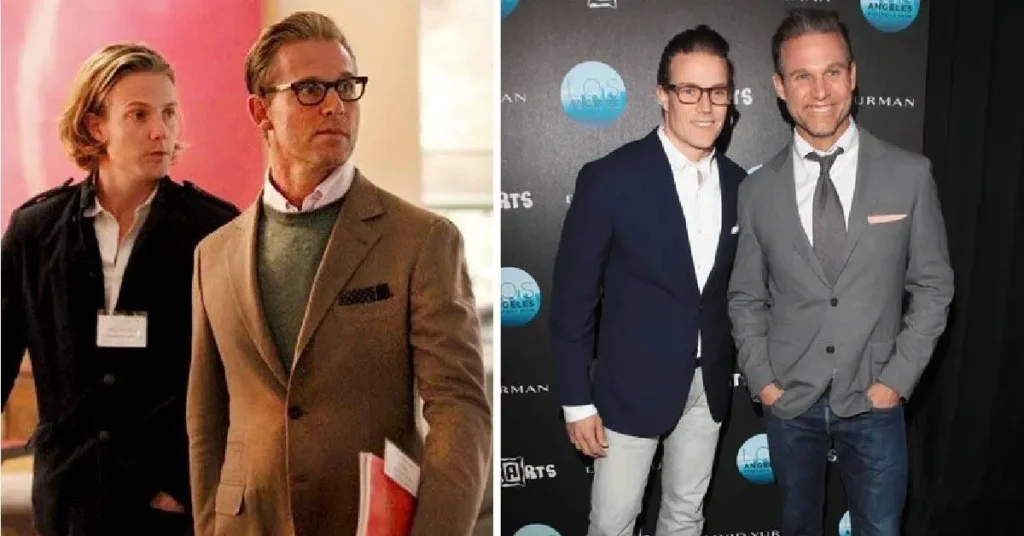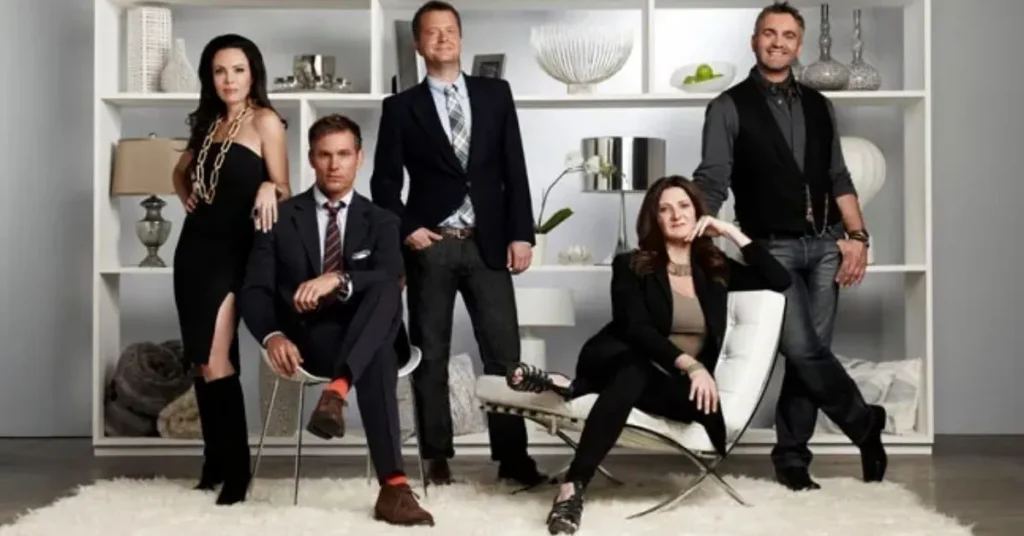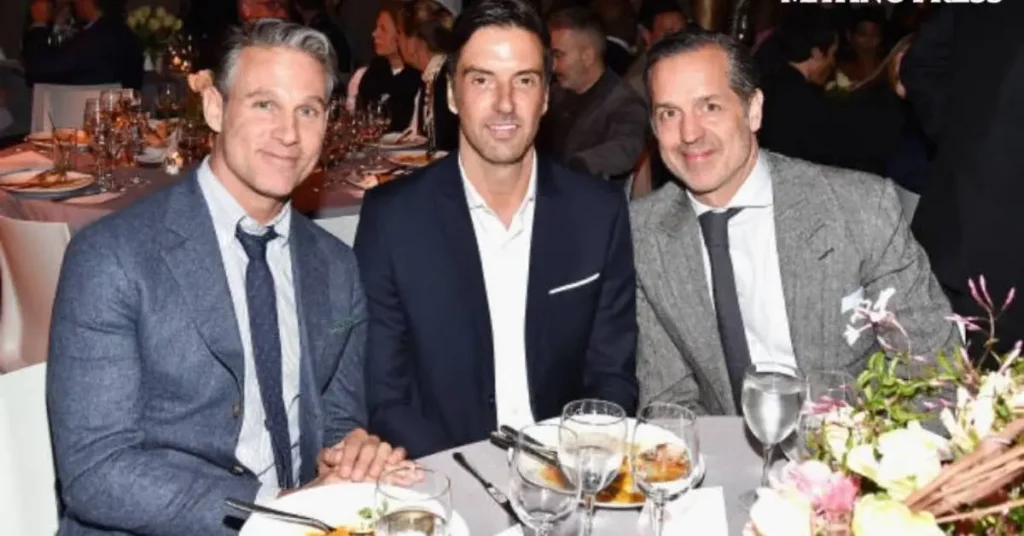From red-hot design partnership to separate paths, the story of Jeffrey Alan Marks and Ross Cassidy’s split continues to fascinate the interior design world. Their journey showcases how creative partnerships can evolve, transform, and sometimes come to an unexpected end.
Quick Facts: Jeffrey Alan Marks and Ross Cassidy Split
| Topic | Details |
| Partnership Start | Sparked in California’s interior design scene, blending Marks’ Californian aesthetic with Cassidy’s modern edge. |
| TV Fame | Gained public attention through Bravo’s Million Dollar Decorators, showcasing their dynamic collaboration. |
| Signature Style | Combined comfort-driven luxury with bold, contemporary elements in projects worldwide. |
| Reasons for Split | Professional pressures, diverging creative visions, and challenges of blending personal and professional life. |
| Post-Split Career Focus | Marks: Sophisticated California coastal luxury; Cassidy: Avant-garde design and cross-disciplinary innovation. |
| Notable Joint Projects | Montecito Ranch Estate, Beverly Hills Hotel Bungalows, Pacific Palisades Compound (award-winning). |
| Individual Successes | Marks: Furniture and lighting collections, luxury residential projects. Cassidy: Experimental design and fashion collaborations. |
| Fan Reaction | Initial disappointment, but continued support for their individual ventures. |
| Impact on Design Industry | Popularized “livable luxury” and sustainable design practices; contributed to diverse creative approaches. |
| Legacy | Inspires designers with lessons on creative evolution, collaboration, and personal growth. |
The Partnership: A Creative and Personal Bond

The magic sparked when California-based designer Jeffrey Alan Marks met Ross Cassidy in the bustling interior design scene. Their connection transcended mere professional collaboration, blending Marks’ sophisticated Californian aesthetic with Cassidy’s innovative modern edge.
Their appearance on Bravo’s Million Dollar Decorators catapulted them into the spotlight, where audiences fell in love with their dynamic chemistry. The show captured not just their design prowess but the authentic warmth of their relationship.
What set them apart was their unique ability to merge comfort-driven luxury with bold, contemporary elements. Their projects ranged from cozy Malibu beach houses to sophisticated New York penthouses, each space telling its own story while maintaining their signature blend of styles.
Reasons Behind the Split
The pressures of maintaining both a personal and professional relationship in the public eye took their toll. Being part of Million Dollar Decorators meant constant scrutiny, while managing their growing brand demanded increasingly more from both partners.
Their creative visions began diverging as their individual styles evolved. Marks leaned further into his refined California aesthetic, while Cassidy found himself drawn to more experimental, avant-garde approaches. This natural evolution in their artistic expressions created subtle but growing tensions.
Running a joint brand while nurturing a personal relationship proved challenging. Industry insiders note that the demands of high-profile clients, product line developments, and public appearances created a perfect storm of stress factors.
Quote from a former colleague: “They were both brilliant individually, but sometimes two stars shine brighter apart than together.”
The Art of Collaboration
During their partnership, Marks and Cassidy transformed countless spaces into masterpieces. Their renovation of the Montecito Ranch Estate became a defining project, showcasing their ability to blend traditional California architecture with contemporary flourishes.
Their collaborative work on the Beverly Hills Hotel Bungalows demonstrated their mastery of luxury hospitality design. The project perfectly captured their signature style – Marks’ refined comfort meeting Cassidy’s innovative touches created spaces that felt both timeless and fresh.
A particularly notable achievement was their design for the Pacific Palisades Compound, which won multiple industry awards. The project featured custom furniture pieces that would later inspire their product lines.
The Evolution of Their Individual Styles

Jeffrey Alan Marks has deepened his connection to the California coastal aesthetic since the split. His recent projects showcase a refined interpretation of beach-inspired luxury, incorporating natural materials and sophisticated color palettes.
Quote from Marks: “Design should feel effortless yet thoughtful. It’s about creating spaces that welcome and inspire.”
Ross Cassidy’s post-split work reveals his passion for pushing boundaries. His recent collaboration with contemporary artists has produced installations that challenge traditional interior design concepts, merging functionality with artistic expression.
Industry Impact and Innovation
Their influence on the interior design industry extends beyond their individual projects. Together, they helped popularize the concept of “livable luxury” – spaces that combine high-end design with practical comfort.
Both designers have contributed significantly to sustainable design practices. Marks champions eco-friendly materials in his furniture collections, while Cassidy explores innovative recycling techniques in his experimental pieces.
Impact on Their Careers and Future Directions
Post-split, Jeffrey Alan Marks has expanded his empire significantly. His furniture and lighting collections reflect his signature style of relaxed sophistication, while his high-end residential projects continue to grace the pages of leading design magazines.
Ross Cassidy ventured into unexplored territory, mixing different artistic disciplines in his work. His avant-garde approach has earned him recognition in both the design and fashion worlds, proving that sometimes the end of one chapter leads to unexpected opportunities.
Their separate successes highlight an important truth: sometimes personal and professional growth requires taking different paths. Both designers have maintained their integrity and professionalism throughout their transition.
Lessons and Reflections

The story of Marks and Cassidy offers valuable insights into the complexities of creative partnerships. Their experience shows that success can take many forms, and that change, while challenging, often leads to new opportunities for growth.
Their journey demonstrates the importance of allowing individual creativity to flourish, even when it means taking separate paths. The design industry has benefited from having two distinct voices emerge from what was once a unified vision.
Read more: Isaac Arellanes – Age, Bio, Height, Weight, Girlfriend, Net Worth
FAQ’s
What caused the split?
A combination of professional pressures, diverging creative visions, and the challenges of maintaining both personal and professional relationships.
Do they still communicate?
While both maintain professional discretion, industry sources suggest they maintain cordial respect for each other’s work.
How has their work evolved since separating?
Both have developed stronger individual identities – Marks focusing on sophisticated California luxury, while Cassidy explores more experimental design concepts.
What are their most successful post-split projects?
Marks has launched several successful furniture collections, while Cassidy has gained recognition for his cross-disciplinary design approaches.
How did their fans react?
While initially disappointed, fans have embraced their individual successes and continue to follow both designers’ careers with interest.
Final Words
The Jeffrey Alan Marks and Ross Cassidy split represents more than just the end of a partnership – it marks the beginning of two remarkable individual journeys. Their story reminds us that change, while often challenging, can lead to unexpected growth and success.
Their legacy lives on not just in the spaces they created together, but in the lessons their journey teaches about partnership, growth, and the courage to evolve. As both continue to shape the future of interior design, their split stands as a testament to the power of following one’s creative truth.

I manage KickyReport.com, a news-driven platform where I deliver timely updates. My focus is on keeping readers informed about the latest events and trends.
